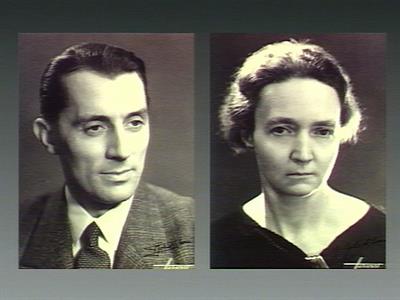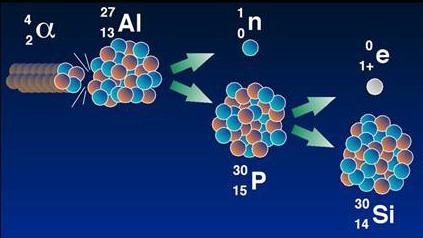PDF chapter test TRY NOW
Sometimes the product nucleus can be radioactive in nature and undergoes further disintegration by emitting particles like neutrons and protons. In 1934, Irene Curie and F. Joliot discovered the process of artificial radioactivity.

F. Joliot and Irene Curie
Artificial radioactivity, also known as man-made radioactivity, is the phenomenon by which lighter elements are made radioactive by artificial or induced methods.
Radiation like alpha particles released during natural radioactivity of uranium is used to create artificial radioactivity in lighter materials such as boron, aluminium, phosphorous, etc. As a result, invisible radiations and elementary particles are also emitted.
Illustration of the bombardment of aluminium by α-particle:
The atoms of stable aluminium were bombarded by α-particles to produce an unstable isotope of phosphorous (_{15}P^{30}). The radioactive phosphorous gets disintegrate and produce stable silicon (_{14}Si^{30}) along with a particle having the mass same as that of an electron, but with a positive charge known as the positron. It was Carl Anderson who discovered the positive particle in the year 1932.
The atoms of stable aluminium were bombarded by α-particles to produce an unstable isotope of phosphorous (_{15}P^{30}). The radioactive phosphorous gets disintegrate and produce stable silicon (_{14}Si^{30}) along with a particle having the mass same as that of an electron, but with a positive charge known as the positron. It was Carl Anderson who discovered the positive particle in the year 1932.

Artificial radioactivity of aluminium by α-particle
Reference:
https://upload.wikimedia.org/wikipedia/commons/4/44/Irene_Joliot Curie._Photograph_by_Wellcome_V0028146.jpg
